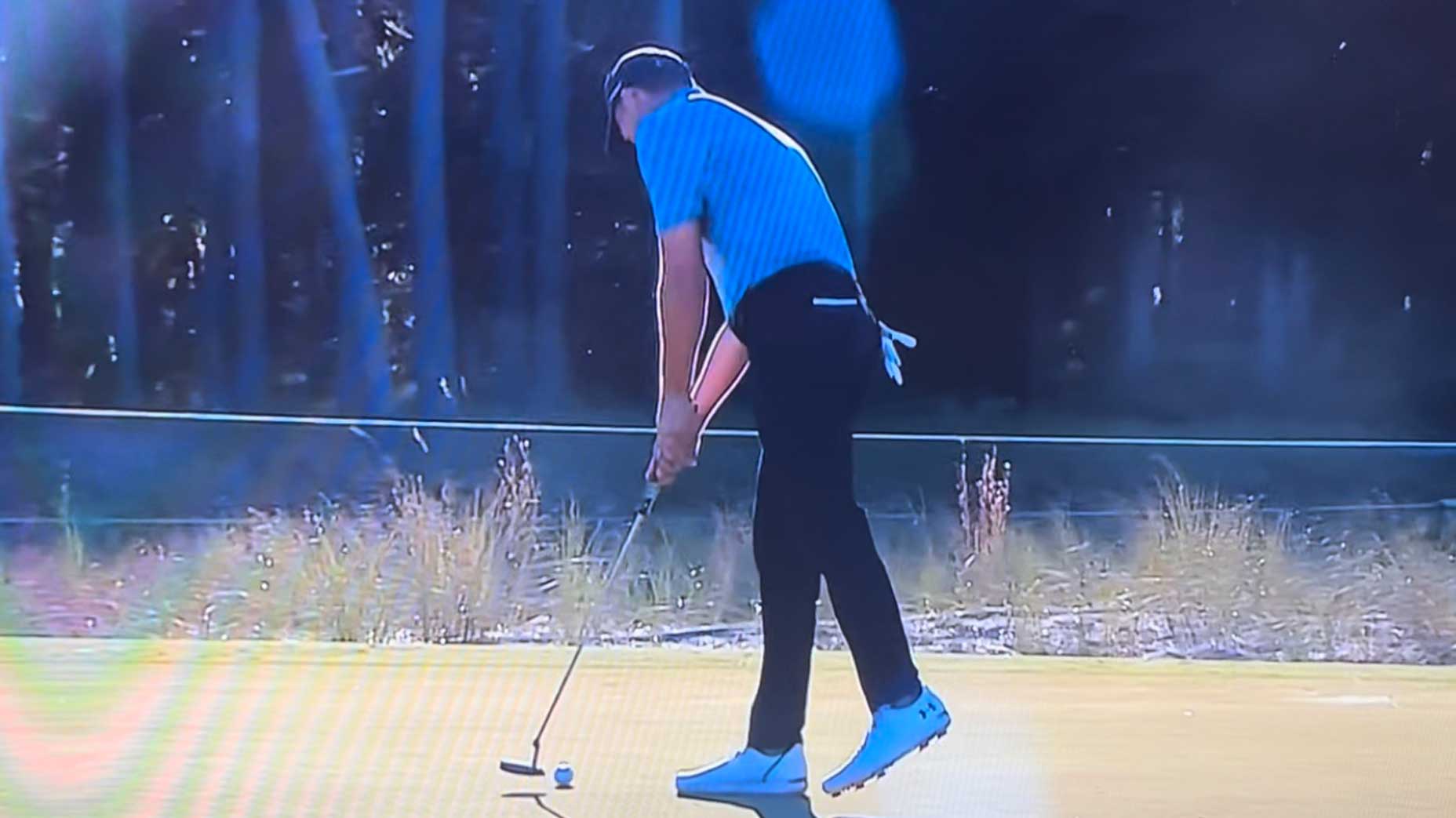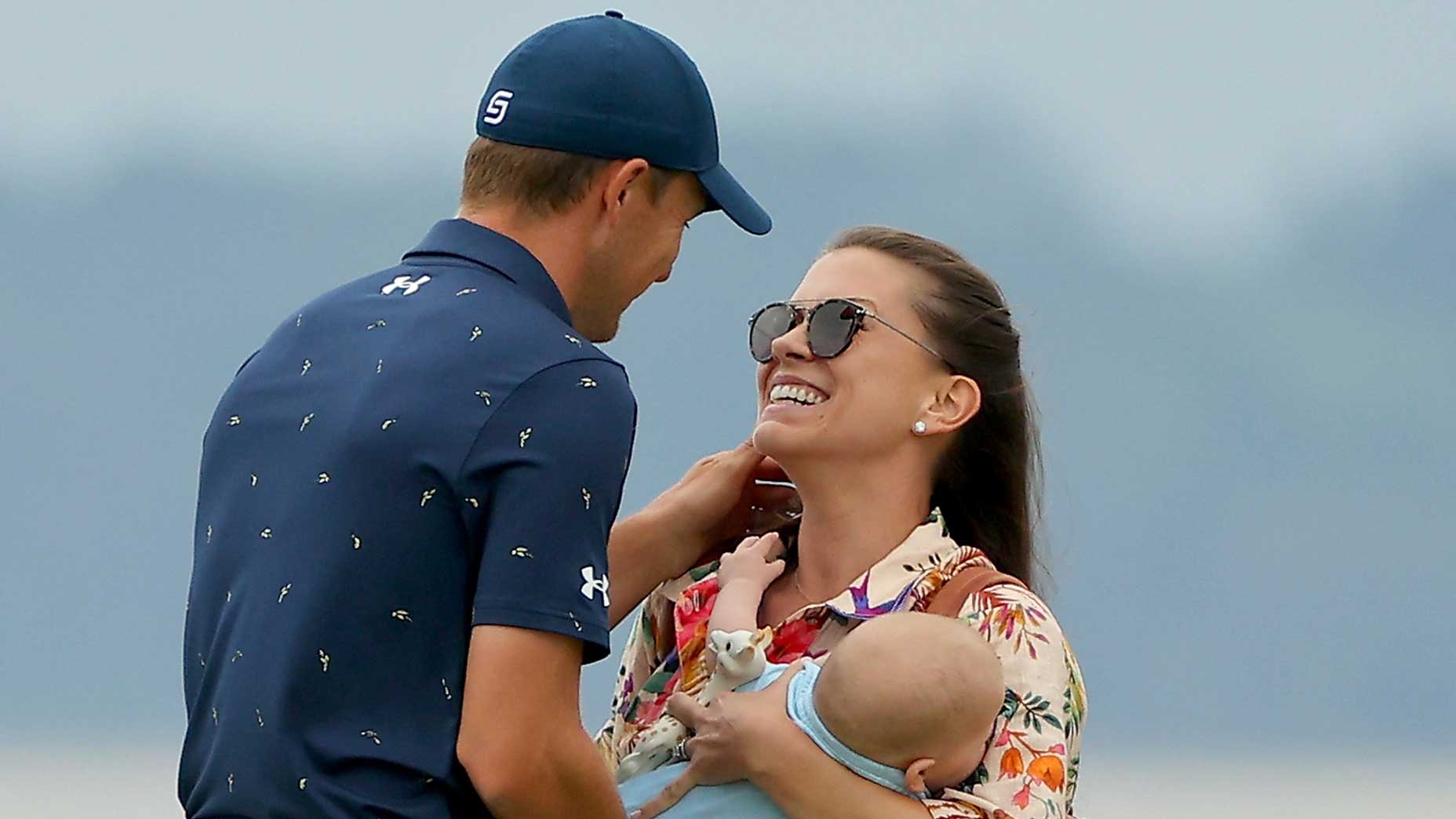“Oh no, Jordan.”
Trevor Immelman said it. Annie Spieth may have thought it.
Earlier this year, Jordan Spieth was in a short-putt funk. At the Texas Open in early April, after missing from 3 feet and circling around the cup, he missed from two. Two weeks later, at the RBC Heritage, the sequence went 12-foot miss, circle, 18-inch miss. It happens, but the pattern was getting ugly.
Jordan Spieth missed a gimme. Then his wife gave him a clever tip.By: Nick Piastowski
So Spieth’s wife wanted a word.
“So Annie told me last night, you need to take five seconds now — and she never comments on my golf,” Spieth said a day later, after winning the RBC. “You need to take five seconds, if you miss a putt, before you hit your tap-in. So I thought about it today. There was a couple times I was just going to rake it, and I was like, no, I’ve got to take five seconds.”
On Thursday, he took about one.
On the 493-yard, par-4 16th at Congaree Golf Club, during Thursday’s CJ Cup first round, Spieth missed from 31 feet. He then missed from 16 inches out. With the back of his putter.
Oh no, Jordan.
“He’s just so frustrated with what’s going on,” Immelman said on the broadcast. “Goes for the quick backhand and blocks it. And then has to go for the coin. To rub salt in the wound.”
I mean that’s just pathetic lol pic.twitter.com/VP2U73gcU4
— Spieth Legion (@SpiethLegion) October 20, 2022
Indeed. As Immelman noted, the frustration had been building. On 2, Spieth missed a 15-footer for birdie. He bogeyed 3 on a three-putt from 9 feet. He triple-bogeyed 6. He bogeyed 8 and 13. On 15, Spieth missed from 11 feet for birdie. Then came 16, where he cleaned up for bogey after the backhand, on his way to a four-over 75.
After the miss, analysts Immelman, a Masters champ, and John Wood, a former longtime caddie, had a notable exchange over putting on quicker greens, the type in play this week at Congaree Golf Club.
“Trevor, I got a question for you,” Wood started on the broadcast. “Obviously, you can’t win at Augusta National without being a good, fast green putter. Was there an overall thing you did, or was it just as simple as trying to adjust your feel?”
“Yeah, I would always play a lot more break. And I think you need a bit of a defensive mindset,” Immelman said. “And I know that may sound weird, but what I mean by that is you try and get the ball to die around the hole and just hope that every now and again, you get lucky and they drop in on the last roll. You just can’t get too aggressive.”
At this point on the broadcast, Hideki Matsuyama missed a 16-footer to the right of the hole.
“See a putt like that, when greens are fast, just not very good at all,” Immelman continued. “It never had a chance, and it was never high enough so faster the greens get, for everybody at home, play more break. Let that ball always have a chance staying on the high side.”


